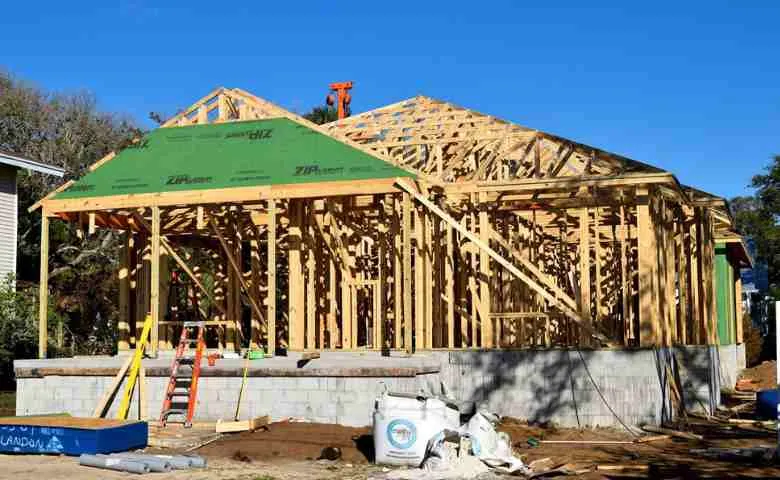Last Updated on February 20, 2023 by Admin
Are you curious about houses made of hemp? They’re one of the latest innovations in the cannabis industry. Many believe they may solve two current issues society faces, namely housing shortages and environmental crises.
Before digging deeper into how these constructions could affect people, you may want to know what exactly these buildings are.
Keep reading to learn more about how they’re made and what unique properties they offer.
Table of Contents
Practice 15+ AI-generated technical and HR interview questions for Civil, BIM, QS, Planning, HSE and Construction roles. Get instant feedback, improved answers, a 7-day improvement plan, and a full PDF report. Designed exclusively for construction professionals.
One free full interview session included. No credit card required.
What is Cannabis Housing?
The popularity of cannabis and hemp is on the rise globally, but using these materials in construction isn’t new. In ancient societies, they used the crop’s strong fibers for building. Currently, it’s viewed as a potential green solution in construction techniques.
These fibers serve versatile roles. Hemp is ideal for producing quality sustainable housing.
How are buildings made from this plant?
The answer is with hempcrete or hemp wood. The former involves mixing the inner fibers of the plant with a lime-based binder. It works well for construction as fiberboards or even as insulation.
How is hemp wood made? By binding the fibers with resin or glue. Some people find that weaving the hemp before blending it with the sticky liquid yields impressive results.
Using either of these options provides a material that’s eco-friendly, and resistant to moisture and most pests. They’re also typically lighter than traditional wood and offer delightful acoustic properties once built.
The Pros of Cannabis Eco-Friendly Houses
What benefits do cannabis or hemp homes offer that current construction materials don’t? Some pros include:
Sustainability
Buildings made from natural items are more environmentally friendly. What makes hemp ideal for making a sustainable green home is that cultivation is straightforward.
It absorbs carbon dioxide during its life cycle, and due to the hardy nature of these crops, growers don’t need pesticides or herbicides. The plants also require little water. The result is a building material with a low carbon footprint.
Energy Efficiency
The environmental impact of hemp has a positive ripple effect. The plant serves as an excellent insulation material that helps keep your home at a comfortable temperature.
As a result, you won’t have to use much energy for heating or cooling your home. It also means you won’t spend as much money trying to stay cool in summer or warm in winter.
Soundproof Environment
Thanks to its unique properties, hempcrete reportedly absorbs sound waves and reduces the amount of noise pollution inhabitants experience.
While it’s not the top option for soundproofing, it provides a reasonable amount of insulation against outdoor noise.
Durability
Hemp is revered for its versatility and durability. The plant is resistant to multiple harmful elements, such as mold, pests, and fire.
Even if these buildings seem like a passing trend, the homes constructed are sure to last for many years.
High Vapor Permeability
Hemp is natural and non-toxic. It also has high vapor permeability, allowing moisture to pass through the walls. This property prevents the risk of pathogens like mold in your home.
It means improved air circulation and ventilation. The quality also results in better humidity regulation.
Related Posts:
- What are Real Estate Companies and How do they Work?
- 12 Innovations in Green Construction Technology Happening Today
- 15 Simple Steps to Make Your Home More Sustainable
- Pros and Cons of Investing In Commercial Construction
The Cons of Cannabis Eco-Friendly Houses
Having a cannabis house is beneficial, especially regarding the environment. Even with all the advantages they offer, there are some drawbacks to consider before opting for this option. These are:
Perceived Stigma
The negative thoughts surrounding hemp and cannabis are fading. Despite this, there’s still hesitation among investors.
The plant is legal in many regions, but certain federal laws make hemp construction a touchy subject.
Fire Safety
Hemp is typically non-flammable, but when combined with other building materials, a risk arises. To meet building codes and safety standards, builders need to take added precautions.
A common way to overcome the issue is by using fire retardant treatments during the construction process.
Price
Hemp building materials can rack up a hefty cost compared to traditional methods. The initial outlay offsets the long-term benefits, but starting with cannabis construction is expensive.
One reason for the high price tag is that the plant is still regarded as a novelty item with a limited production scale.
Limited Supply
This drawback is linked to the previous one. There currently isn’t a large enough market for hemp-building materials for farmers to increase their crops.
As a result, finding top-quality hemp products for building can prove challenging.
Lack of Skill and Standardization
Houses made of hemp are new in the industry. There’s a lot of information and resources that require further study. There are no safety standards or quality codes regarding these buildings.
The lack of standardization makes it a challenge for construction companies, architects, designers, and other professionals in the field. The skills required for making these homes are also quite limited.
Hemp Housing: A Prospective Environmental Solution
Now you know what hemp houses are and what their benefits and drawbacks are. Why not consider the option?
Many individuals want to make changes for a more environmentally friendly lifestyle, and this may be a viable fit. Decide for yourself if hemp homes are a potential solution for future abodes or just a passing trend.
Kyle Kushman

Kyle Kushman is an American writer, educator, activist and award-winning cannabis cultivator and breeder specializing in veganic cultivation. He is a representative of Homegrown Cannabis CO company, has been a contributor for over 20 years, and has taught courses in advanced horticulture at Oaksterdam University in Oakland, California and across the United States. Kushman also hosts a cannabis podcast called “The Grow Show with Kyle Kushman”.


